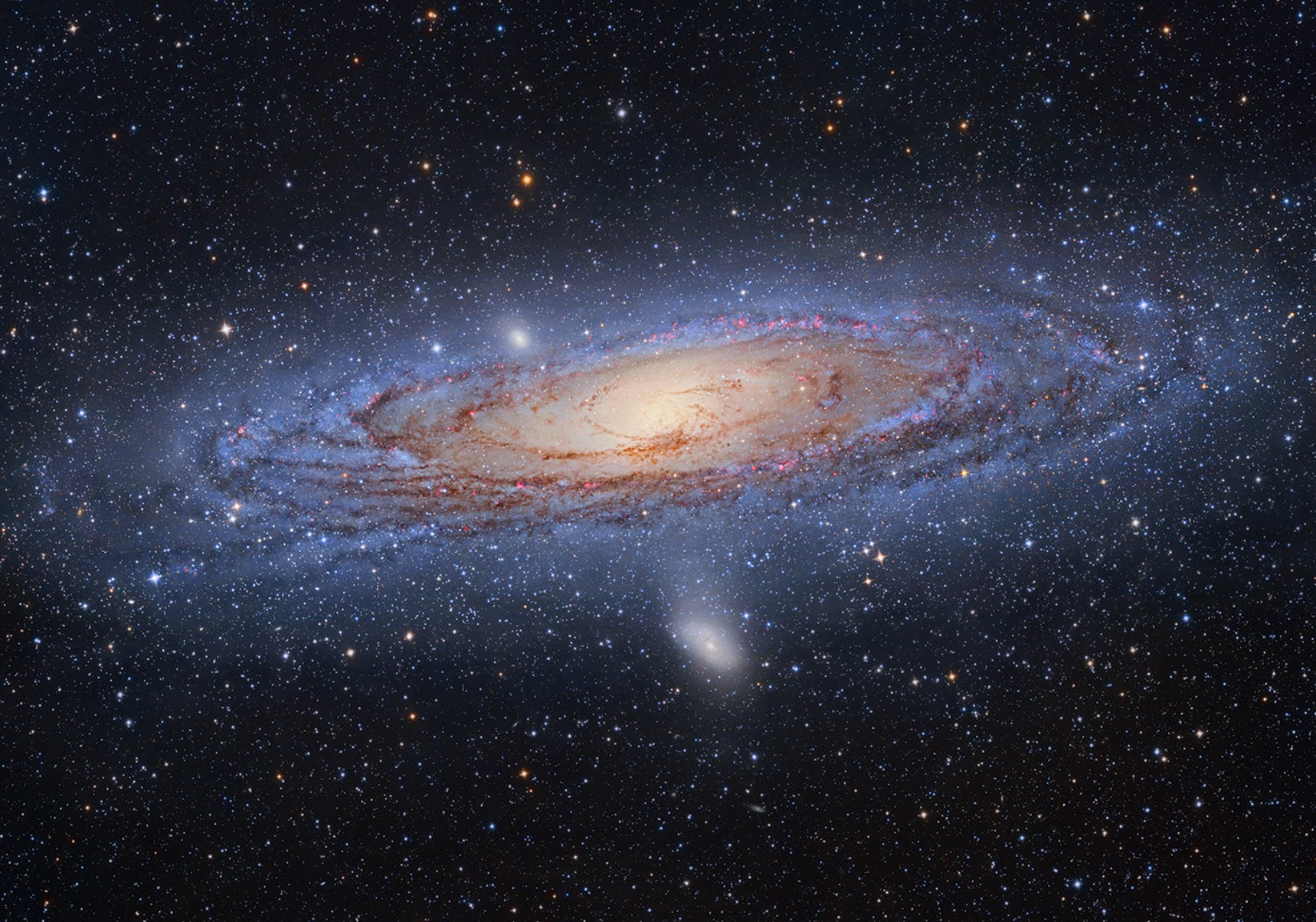
Our species has been around on the planet for approximately 200,000 years. That’s some 8,000 generations, quite a long while any way you slice it. And certainly our ancestors occasionally glanced up at a starry night sky, unhindered by light pollution, and wondered what the twinkling lights were all about.
But the history of astronomy is really very recent. Most scholars agree that the revolutionary moment came in the autumn of 1609 when Galileo used his recently invented telescope to observe the heavens — the pockmarked surface of the Moon, phases of Venus, mini-solar system of Jupiter and its four bright moons, and so on.
Galileo made his first observations just more than 400 years ago. That’s pretty recent history. For several hundred years, as with all rudimentary sciences, much of astronomy was simple observation and rather primitive classification. As with mineral specimens, butterflies, bones, or tree leaves. Astrophysics was born in the 1860s, a period when classification began to transform into understanding the physical nature of stars, planets, and so on. Still, progress arrived slowly.
Just a century ago now, Edwin Hubble, a young astronomer stationed in Pasadena, drove up to use his favorite instrument, the 100-inch Hooker Telescope on Mt. Wilson. He captured a plate of what was then called the Andromeda Nebula, one of his favorite objects. Hubble was transfixed with so-called spiral nebulae, and his images of Andromeda, captured in early October 1923, entered the domain of some of the most famous in the history of science. At first Hubble thought he recorded a nova, an exploding star, in the nebula. Then he realized it was instead a variable star, a so-called Cepheid variable, whose properties are quite well known. He was stunned when the apparent brightness suggested a distance to the Andromeda Galaxy of 1 million light-years, three times greater than the presumed diameter of the entire universe at the time. Now we know that Andromeda is 2.5 million light-years away.
In that crucial observation, Hubble not only proved that spiral nebulae are galaxies, enormous island universes consisting of stars, gas, and dust, but also cracked wide open what came to be called the cosmic distance scale. That was a big year for understanding the universe.
Astronomy hints dark matter is out there, somewhere
More fundamental discoveries lumbered along. In the 1930s the irascible astronomer Fritz Zwicky suggested that dark matter must exist abundantly in the cosmos, evidence first coming from the rotation curves of galaxies. We still don’t know what dark matter is made of, but simply that it must be there. Along came the Oort Cloud of comets, the discovery of Pluto, and the realization that the majority of stars in our Milky Way Galaxy are double or multiple systems.
And yet, the pace of astronomical discovery has exploded over just the past generation. The numbers of astronomers actively working on questions about the cosmos and the volume of published papers is now, well, astronomical. I dare say we have learned more in the last generation than the sum total of what was known from the time of Galileo to that point.
Recent years have brought a flood of findings. We’re found ironclad evidence for black holes, catalogued more than 5,500 planets orbiting stars near us in the Milky Way, explored the Pluto system robotically. We’ve got a good understanding of the age, size, evolutionary history, and fate of the universe. We know what will eventually happen to life on Earth. The “big questions” have largely fallen into place with answers, or at least partial answers. And we knew almost nothing of those answers, say, 50 years ago.
In our ordinary, day-to-day lives, we’re almost always busy, hoping for more, working hard, yearning for other things. To acquire, expand, make everything better day by day. It’s just the way we are. Part of the human condition.
But let’s take a pause, I suggest, and think about how we live in a truly magical time. Astronomy has elevated our knowledge such that we know that we live in a vast galaxy inside a vast universe, and that we’re literally made of atoms from the stars.
Don’t worry, be happy. You’re interested in astronomy, and immersed in a golden age of discovery like we’ve never seen before.
David J. Eicher is Editor of Astronomy Magazine and the author of 26 books on history and science.









